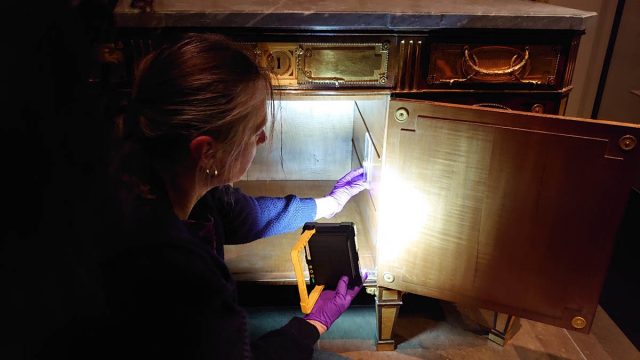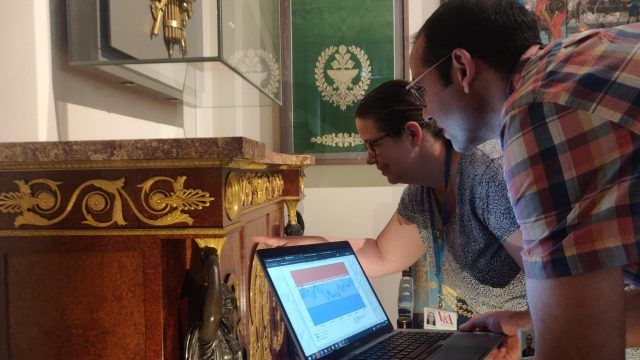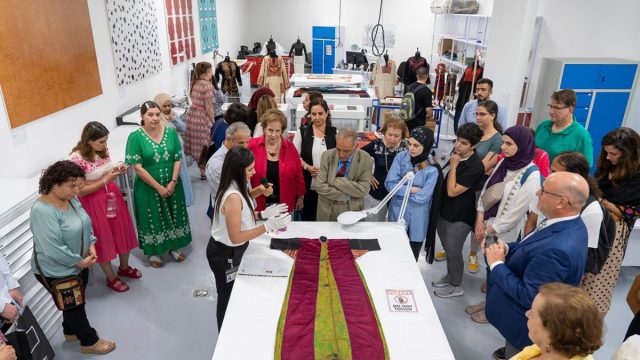The sleeve on the armour was in the worst condition (in terms of the textiles) of all the pieces that made up the armour, and required the most intricate treatment.
The silk damask was very brittle and had begun to split. In some areas the fibres had been lost altogether and the metal thread was also very brittle.
The conservation challenge was to stabilise these areas but with limited access to the inside of the sleeve, all of the support fabric would have to be inserted through the split. This is where having a steady hand comes in very useful!
I first needed to create a temporary mount to support the sleeve whilst I worked on it. I created this out of plastazote foam cut to size, covered in a layer of polyester wadding and then finally a layer of calico. This provided a surface into which I could carefully pin the sleeve to hold it in position.


The sleeve is carefully pinned to the covered support block

Taking the pattern of the sleeve using thin spider tissue
After dyeing some silk habutai to a suitable colour, I cut the patch to size. Then I rolled up the patch in such a way as to be able to unroll it once I had inserted it. As the fibres surrounding the split were very fragile, this had to be done very carefully and with a lot of patience!

Choosnig the most appropriate coloured silk habutai for the support patch
Once the support patch was in position, I was able to pin it using very fine entomological (insect) pins and then stitch in place using a very fine polyester thread called Skala.

Realigning the lifted threads ready for support stitching
A type of conservation stitch was used to hold the loose threads in place and to realign the weave so that it lay as straight as possible. This is called laid couching and is one of the most common stitches used in textile conservation. It looks like this:

Once all the stitching had been completed, a fine conservation-grade nylon net was stitched over the patch in order to hold any other loose threads down. As the sleeves will be handled a little when they are put back on the 19th century frame, the net acts a protective barrier to the damask and hold the sleeve fabric in place.



Nice read. Detailed explanation. Good to find your post Sarah. Refreshed my memory of our meeting at v&a